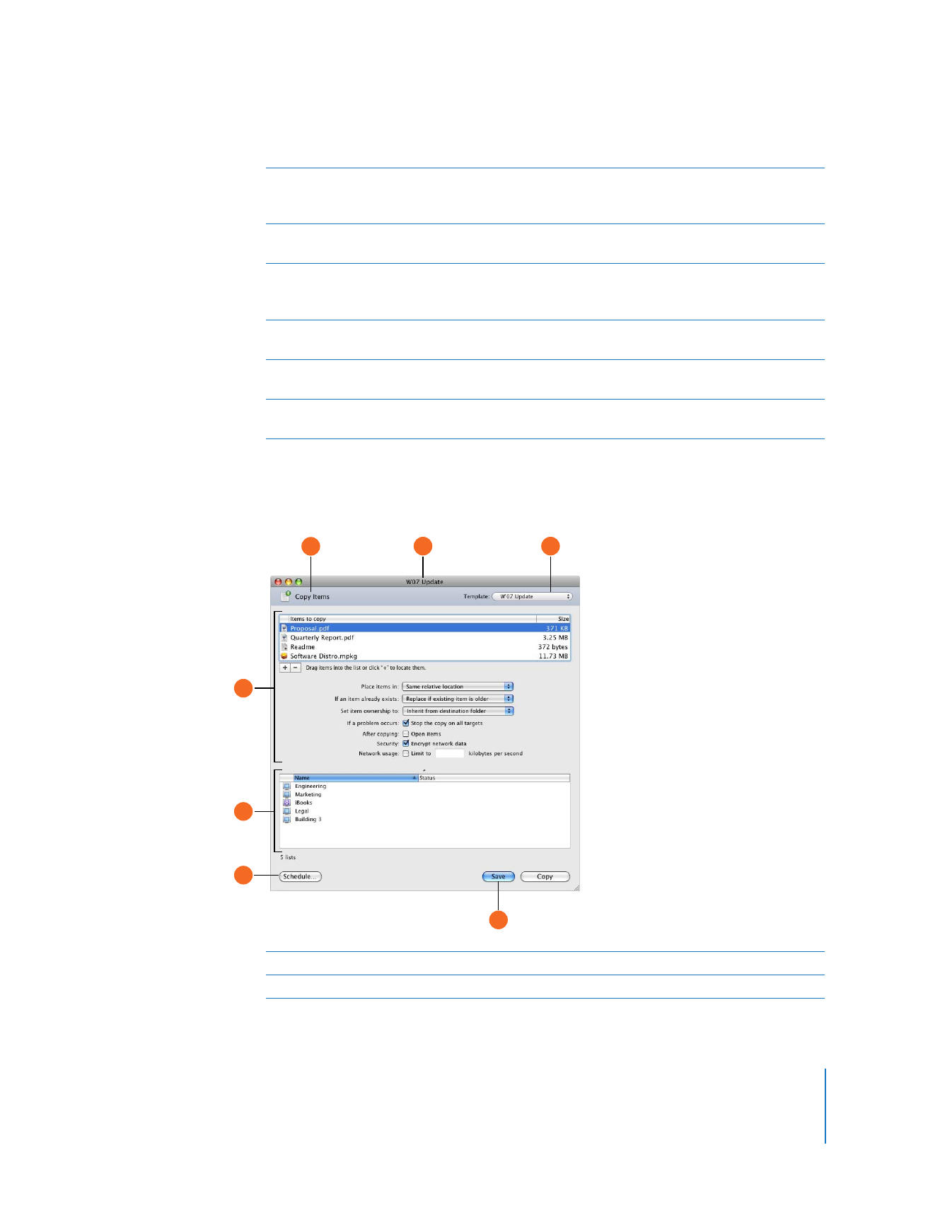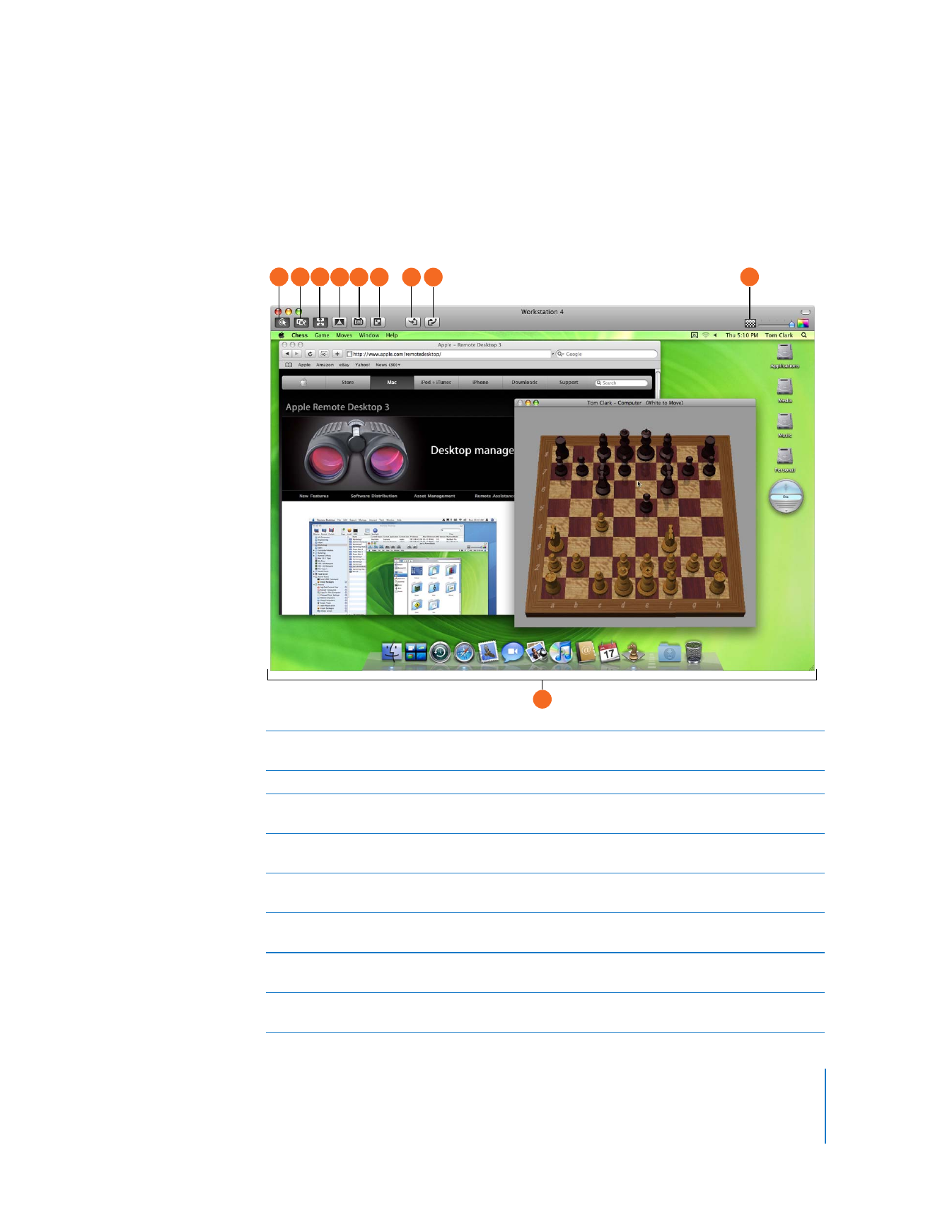
Task Dialogs
When you click a task, a dialog appears to let you set task parameters or confirm
the task.
G
Task server list: This lists tasks delegated to the Task Server, rather than run those run directly
from the application. When all the target computers have come online and participated in the
task, the task is labeled as complete.
H
Active tasks list: This list shows all tasks that are currently running or scheduled and
uncompleted.
I
History list: The History list shows a list of most recently run tasks, as defined in the Remote
Desktop preferences. You can inspect each task by double-clicking it. Once a task is completed
(whether successfully or not) it is moved to the History list.
J
Task status icon: These icons represent the current state of a task. See “Task Status Icons” on
page 178.
K
Client status icon: Icon representing the current state of a client computer. See “Client Status
Icons” on page 177.
L
Customizable toolbar: The toolbar can be fully customized with icons of your most-used Apple
Remote Desktop features.
A
Task type header: This header area shows you the kind of task represented.
B
Saved task name: When you save a task, you name it for your own use.
A
B
G
C
D
E
F

32
Chapter 2
Getting to Know Remote Desktop
C
Task configuration area: This area is different for every task. It’s where you set operating
parameters for the task to be performed.
D
Participating computers: This area shows you the computers that will be affected by the task.
You can add or remove computers in this area without changing computer list membership.
E
Schedule task button: When you click this button in a task dialog, you can set a time to
perform the task as well as repeat the task. See “Working with Scheduled Tasks” on page 170 for
more information.
F
Save task button: When you click this button in a task dialog, you can name and save the task
as configured. Saved tasks appear in the left side of Remote Desktop’s main window.
G
Task templates: This control allows you to save current task configuration settings, or apply
previously saved settings to the current task. These templates are stored on a per-task basis.
For example, the Send UNIX Commands template pop-up has an extensive list of built-in
templates, while other tasks may have none.

Chapter 2
Getting to Know Remote Desktop
33